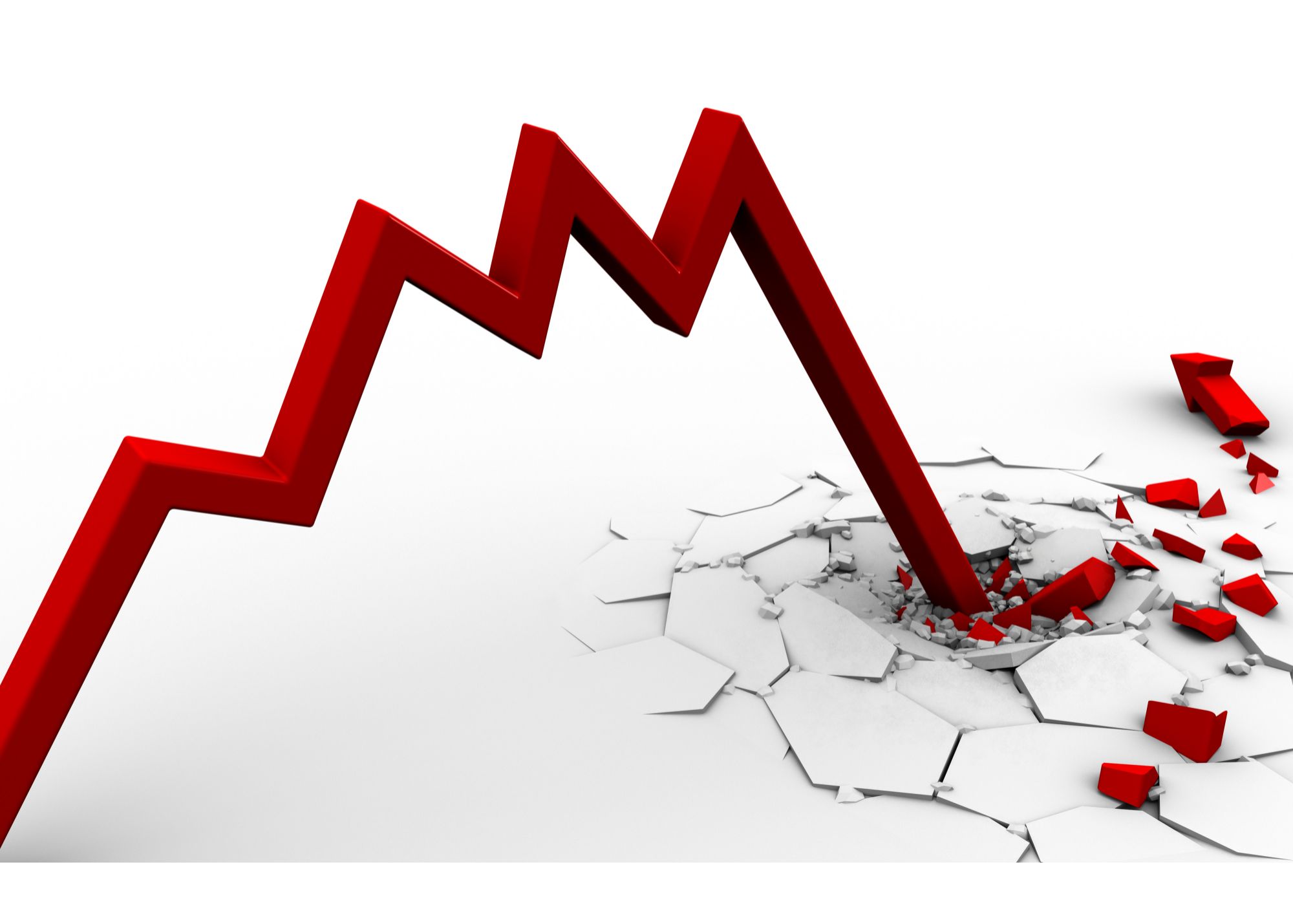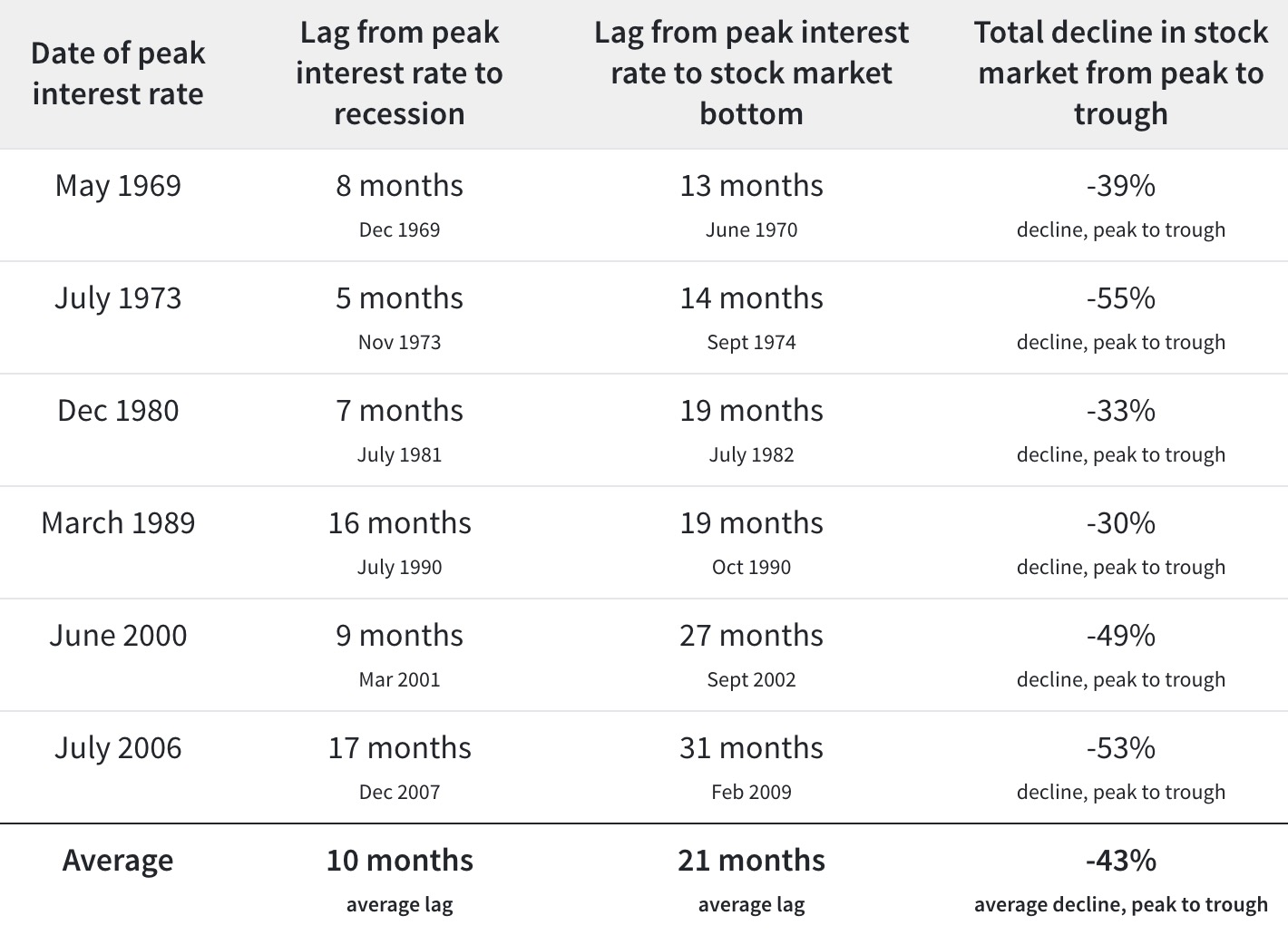Market Commentary: When Will The Market Crash 43%?
Want to hear something crazy? The stock market may be really bad at predicting the future. It’s widely believed that the market is good at anticipating future events but data shows it might actually be very, very bad at doing so when interest rates are hiked. Here’s the skinny.
Key Points
- The average lag from interest rates peaking to the stock market hitting a low is 21 months while the average fall in the stock market is 43%.
- If the Federal Reserve hikes rates a couple more times this year with December likely to be the final hike, the average lag from interest rate peak to recession is ten months.
- This would translate to a recession starting in October 2024 and the stock market hitting a low in late 2025.
How Long Does It Take For Markets to Fall?
In 2004, the Federal Reserve started to hike rates from 1% to a high of 5.25% in the summer of 2006. When the Fed hikes rates, the cost to borrow rises and it acts as a drag on economic output. Yet it wasn’t until the start of January 2008 when the the recession officially began. And the stock market? Well, it didn’t plunge until October 2008 and finally bottomed in March of 2009, a full year and more later.
If the market is so good at discounting the future, why didn’t it fall in 2006? Or in 2007 when the recession was just over the horizon and could be widely anticipated?
But perhaps the market bottoming 2.5 years after the Fed rates peaks was a once-off you think? Not at all.
In the summer of 1980 Volcker famously hiked rates by 9% to 19% a year later. The stock market fell 30%, but not until mid 1982, a year after the recession officially began.
By analyzing the recessions over the past half century or so, we see a common theme. Just look at the data from when interest rates peaked to stock market bottom:
- May 1969 interest rates peaked > 13 months later stock market bottomed
- July 1973 interest rates peaked > 14 months later stock market bottomed
- December 1980 interest rates peaked > 19 months later stock market bottomed
- March 1989 interest rates peaked > 19 months later stock market bottomed
- June 2000 interest rates peaked > 27 months later stock market bottomed
- July 2006 interest rates peaked > 31 months later stock market bottomed
The average lag from interest rates peaking to the stock market hitting a low is 21 months. And the average fall in the stock market is 43%.
So returning to the present, the Federal Reserve has made it clear that it expects to hike rates a couple of more times this year with December likely to be the final hike. If that plays out, the average lag from interest rate peak to recession is ten months and the average lag from the same starting point to the stock market bottoming is 21 months.
That would translate to a recession starting in October 2024 and the stock market hitting a low in late 2025.
Credit: Fundrise




